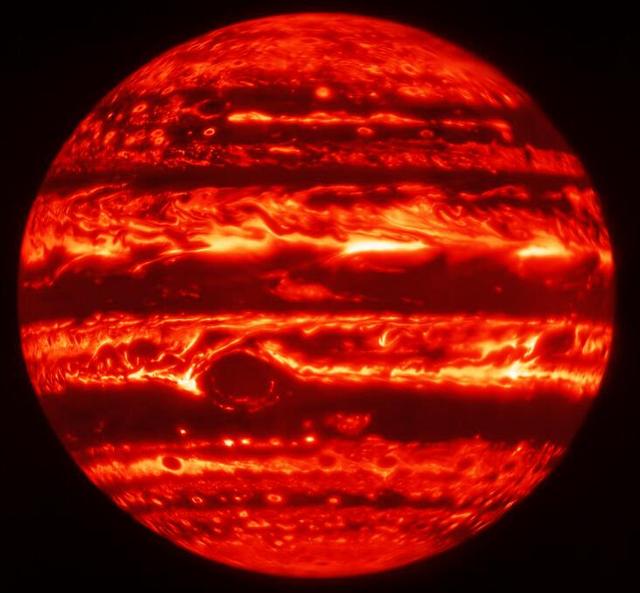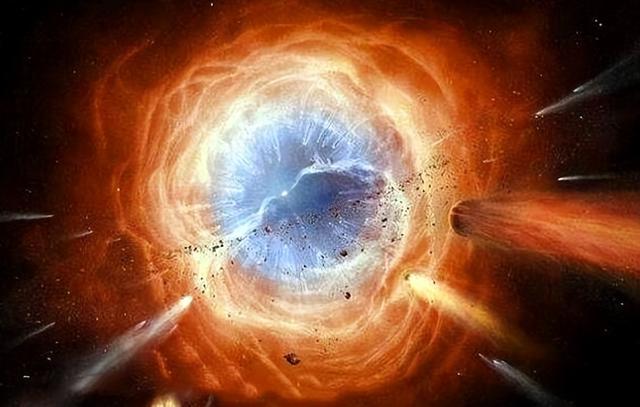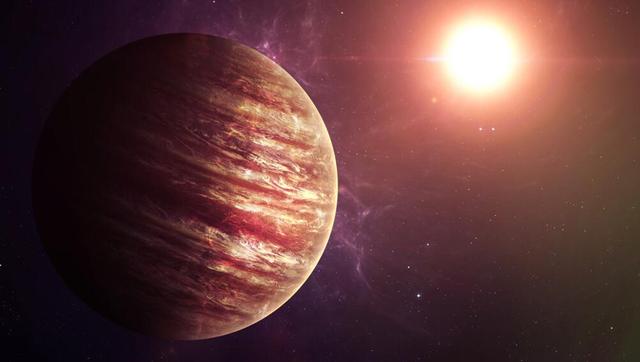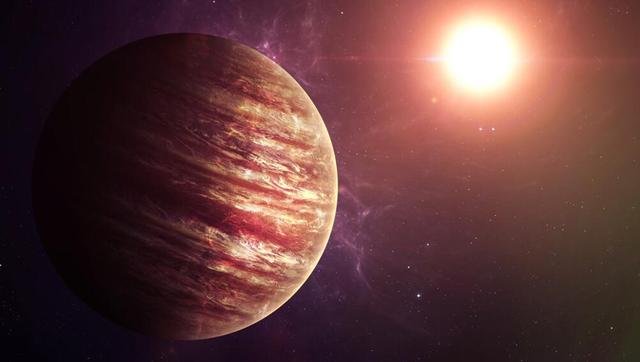Of the eight planets in our solar system, jupiter is the largest in terms of both volume and mass, being about 1,321 times the size of the earth and more than twice the mass of the other seven planets in our solar system, which is why it is also known as the 'king of the planets' in our solar system.

As the 'king of the planets' in our solar system, jupiter's gravity is strong enough to support the accretion of hydrogen, the lightest element in the universe, so it will continue to 'take in' hydrogen as long as there is enough in its vicinity "Once its mass reaches the minimum standard for a star (8% of the sun's mass), the temperature and pressure of jupiter's core will ignite the fusion of hydrogen and turn it into a star.
So whether jupiter will become a star in the future depends largely on whether it has access to enough hydrogen in the future. It is important to note that the universe is unusually empty and it is almost impossible for jupiter to acquire large amounts of material from outside the solar system, so we only need to discuss whether jupiter can become a star by absorbing material from within the solar system.

One view is that in about 5 billion years the sun will evolve into a red giant star, and in the time that follows the sun will throw off a lot of its own outer material and eventually evolve into a white dwarf.
Since the main element of the sun is hydrogen (about 73.46 of the sun's mass) and the sun only consumes hydrogen in its core during the main sequence phase, there is in fact a lot of hydrogen in the outer layers of the sun's ejected material, in which case jupiter should be able to absorb the hydrogen that originally belonged to the sun and evolve into a star.

It is undeniable that if this were the case, jupiter could become a star in the future, but it is likely that this is not the case, why? See the analysis below.
A sun in the red giant stage is still bound by the gravitational pull of the sun's outer layers, which are actually thrown off because of the nuclear fusion of helium in the sun's core.
After the sun has evolved into a red giant, the hydrogen in its core has almost completely fused into helium, so the fusion inside the sun stops, after which the sun loses its internal radiation pressure and continues to collapse, causing the temperature and pressure in its core to increase, while the helium in the central region of the sun is gradually compressed into the condensed state.
Since the volume of the condensed matter is not affected by temperature (i.e. It does not expand or contract thermally), when the temperature and pressure reach the conditions for the ignition of helium fusion, the helium in this state undergoes a short-lived uncontrolled thermal fusion, which is known as a "Helium flash".

After a 'helium flash', the sun stops collapsing as it gains internal radiation pressure, but this is only temporary and as the energy dissipates, the sun's core collapses again until the next 'helium flash' occurs.
A single "Helium flash" Can release hundreds of billions of times the normal energy of the sun, and with such a powerful energy, the sun's gravity is not strong enough to bind the outer layers of matter, which are then thrown out at high speeds of thousands of kilometres per second. This is how the sun gradually loses its outer layers of material in waves of "Helium flashes".
The escape velocity of jupiter is about 59.5 km/s, which means that as soon as an object moves faster than 59.5 km/s, jupiter's gravity cannot "Catch" It.

It can be assumed that jupiter's gravity is unable to catch material ejected by the sun, in which case only a very small amount of material "Hitting" Jupiter "Head-on" Can be "Collected" By jupiter, while the rest of the material just "Passes" By jupiter. The rest of the material will simply "Pass by" Jupiter and continue to spread out into the outer reaches of the solar system.
According to stellar evolution models, the sun will evolve into a white dwarf after the red giant stage, with a mass of about 54% of the sun's original mass, which means that the sun will then eject 46% of its own mass.
Given the distance between jupiter and the sun and the surface area of jupiter, the amount of material absorbed by jupiter at that time would be only about 1 in 20 million of the total mass of material ejected by the sun.
Although jupiter is known as the "King of the planets" In our solar system, it is only about 1 thousandth of the mass of the sun, and the minimum standard for becoming a star is 8% of the sun's mass, so it is clear that such a small amount of material would not allow jupiter to reach the mass required to become a star.

On the other hand, after the sun evolves into a white dwarf, the material ejected by the sun will form a huge planetary nebula, which can reach a diameter of about 1 light year, and jupiter will still be bound by the sun's gravity, except that the sun will have lost so much mass that its gravity will be significantly reduced, so that jupiter will then be in a more distant orbit around the sun.
As mentioned above, the sun throws out 46% of its own mass, and although this may seem like a lot of material, it is so sparsely dispersed in a nebula 1 light year in diameter that the chances of a future jupiter absorbing the material in this nebula to reach stellar status are essentially nil.


